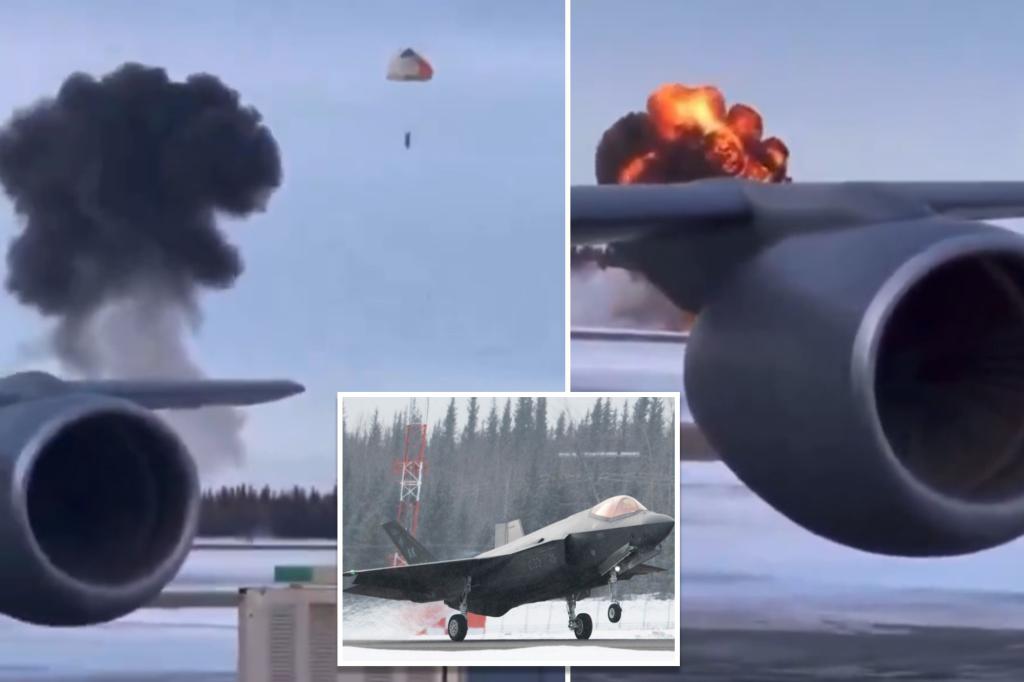A F-35 pilot spent 50 minutes on a conference call mid-air with engineers to solve a problem with a $200 million jet before it plummeted onto the runway at Eielson Air Force Base in Alaska, forcing him to eject from the aircraft, according to a report.
In harrowing footage shared on social media, the jet spiraled to the ground on January 28 and burst into flames after the pilot floated safely onto the runway thanks to their parachute.
The crash occurred due to ice in the hydraulic lines in the nose and main landing gears of the F-35, preventing them from deploying as needed, according to a crash report obtained by CNN.
After takeoff, the pilot attempted to retract the landing gear but was unable to do so. When lowering it again, the landing gear would not center and would lock at a left angle.
Attempts to fix the gear caused the fighter jet to react as if it were on a ground surface, the report obtained by the outlet said.
The pilot then got on a call with five Lockheed Martin engineers as the plane swooped near the air base. The call lasted nearly an hour, the report detailed.
The pilot then tried two “touch and go” landings in a bid to straighten the jammed nose gear, but those attempts failed and resulted in the landing gears completely freezing up, the outlet reported.
By then, the jet’s sensors indicated it was on the ground and the jet became “uncontrollable,” — forcing the pilot to make the split-second decision to eject, the report said.
An Air Force inspection revealed that one-third of the fluid in the hydraulic system in the nose and right main landing gears was water.
A similar problem — causing “hydraulic icing” — occurred at the same base during a flight nine days after the crash, though it was able to land without an incident.
The temperature at the time of the crash was a bone-chilling -1 degree Fahrenheit, the report said.
The investigative report ultimately concluded that “crew decision-making, including those on the in-flight conference call,” and lack of “oversight for the hazardous material program,” all contributed to the crash.
F-35 jet manufacturer Lockheed Martin has come under fire for cutting corners in its production of the aircraft while still making it obscenely expensive.
The price of the fighter jet has been cut in recent years, dropping from roughly $135.8 million each in 2021 to $81 million in 2024 per a preliminary deal between the US Department of Defense and Lockheed Martin.
In November, then-Department of Government Efficiency head Elon Musk slammed the Pentagon’s F-35 program for its shoddy execution and promised to cut federal spending for it.
“The F-35 design was broken at the requirements level, because it was required to be too many things to too many people. This made it an expensive & complex jack of all trades, master of none. Success was never in the set of possible outcomes,” Musk wrote on X.
“And manned fighter jets are obsolete in the age of drones anyway,” Musk added. “Will just get pilots killed.”
The F-35 program is expected to run through 2088 with costs anticipated to exceed $2 trillion, according to the US Government Accountability Office.
Read the full article here
